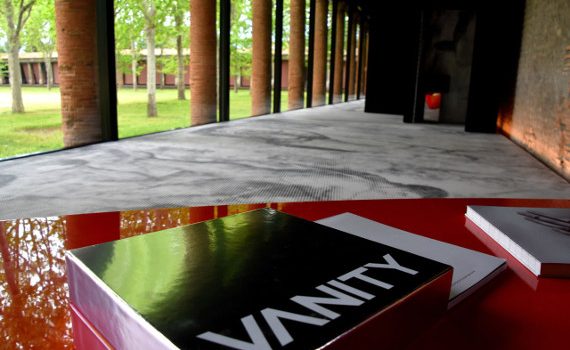Exhibition “Vanity – Stories of Jewellery from the Cyclades to Pompeii”
Vanity in Exhibition, between Greece and Pompeii
“VANITY: stories of jewels from the Cyclades to Pompeii”
Great Palaestra of the Excavations of Pompeii
10 May - 4 August 2019
Vanity, ephemeral pleasure, the captivating illusion of happiness, invariably displayed through riches, even in the Greek and Roman world. This is the theme of the refined exhibition “Vanity: Stories of Jewels from the Cyclades to Pompeii”, scheduled to run from 10 May to 4 August 2019, at the Great Palaestra of the excavations of Pompeii (west portico).
Jewellery in the Cycladic and Pompeian areas is compared in an elegant display of styles and civilization, with their common ground in vanity and the ostentation of wealth. Gems, necklaces, fibulae, earrings, rings and armillae in gold, silver and bronze, with inserts in precious and semi-precious materials (ivory, stones, glass paste, coral, pearls, etc.), originating from Delos and other islands of the Cyclades, will be exhibited beside jewels found in Pompeii and other sites in Campania, including Longola, Sarno, Paestum, Oplontis, Terzigno and Herculaneum. In addition to the pieces exhibited here, visitors can learn more about the jewels from Herculaneum in the exhibition “SplendOri” at the Archaeological Park of Herculaneum, open until 30 September 2019.
The exhibition, inaugurated by the interim Director Alfonsina Russo, was promoted by Massimo Osanna during his tenure as Director General of the Archaeological Park of Pompeii, and by Demetrios Athanasoulis, Ephorate of the Cyclades, and is coordinated by Annamaria Mauro, architect of the Archaeological Park of Pompeii.
“Vanity: Stories of Jewellery from the Cyclades to Pompeii” is an initiative born from the collaboration between the Archaeological Park of Pompeii and the Ephorate of the Cyclades, aimed at the broader production of common programs of study, research, promotion and widening of the knowledge of their respective archaeological holdings, closely connected in the past.
The exhibition layout, designed by Kois Associated Architects, rests on a principle that is both geographical (the Cyclades and Campania, with Pompeii as the epicentre) and chronological (from the 8th century to the eruption of Vesuvius in 79 AD). The exhibition lives on the contrast between the dark materials housing the display cases (evoking the tragic eruption) and the brilliance of the exquisite exhibits. The faces and figures of Pompeian frescoes enliven the layout, reinterpreted and presented in a contemporary graphic version, which has transformed the appearance of the west portico of the Great Palaestra.
“Pompeii and Delos,” declares the interim Director Alfonsina Russo, “in addition to the exceptional state of conservation that distinguishes them and the great importance of their public and residential architecture, both experienced a golden age in around the 2nd century BC. Their vigour and prosperity, demonstrated by the numerous precious objects on display, are the expression of an expanding economy that united both cities. While Delos enjoyed close relations with Italy and in particular Campania, the Pompeian region was a setting where the Greek and Roman worlds were entwined in a unique dialogue.”
“Confirming the close ties between the different areas of the Mediterranean,” declares Massimo Osanna, curator of the exhibition, “the jewels from Delos and the other islands of the Cyclades will be displayed beside contemporary jewellery mainly from Pompeii, and, in some cases, from other sites relevant to the Campania region. The exhibition will present two studies in depth, at the opposite chronological extremes, of the Cyclades with their extraordinary prehistoric civilization, and, for the Roman age, of Pompeii and the other Vesuvian sites. The city’s destruction in 79 AD has preserved an extraordinary assortment of jewels, exceptional in terms of quantity and considered almost unique in the ancient world. The exhibition will extend into one of the most striking areas of Pompeii, which has long been destined to become an exhibition container, a display within the display, in one of the symbolic monuments of the Roman city. This is the west portico of the Great Palaestra, specially enclosed for the occasion, with an installation that can also be used for subsequent exhibitions.
“The jewels from Delos and in general from the Cyclades,” adds Demetrios Athanasoulis, Ephorate of the Cyclades and co-curator of the exhibition, “offer a more varied overview in terms of chronology and contexts of origin (necropolises, inhabited areas, shrines). Among Greek jewels, those from Delos are outstanding, in particular the ones from the inhabited area. They date from a period when there were close commercial and cultural ties between the Campania region and the island of the Cyclades , a free port frequented by merchants from all over the Mediterranean, with a massive presence of Italic negotiatores.”


